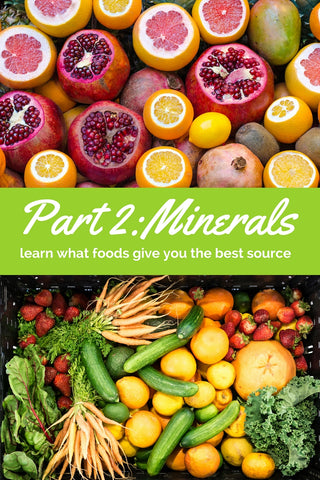 In part 1, we discussed the different vitamins and how to incorporate them into your diet by choosing the best food sources. This time around, we’re looking at the minerals out there and how you can maximize your intake by following our list of foods for each category. Did you miss Part 1: Vitamins? You can check it out right here. Again, just like last time, in order to provide you with the ultimate best food choices, to make our list the food sources had to provide at least 50% of the dietary reference intake (per the USDA) in one serving. Take a look at part 2!
In part 1, we discussed the different vitamins and how to incorporate them into your diet by choosing the best food sources. This time around, we’re looking at the minerals out there and how you can maximize your intake by following our list of foods for each category. Did you miss Part 1: Vitamins? You can check it out right here. Again, just like last time, in order to provide you with the ultimate best food choices, to make our list the food sources had to provide at least 50% of the dietary reference intake (per the USDA) in one serving. Take a look at part 2! It’s common to hear that you should eat oranges if you need more vitamin C in your diet or have a banana if you want to get some potassium. What you may not realize is that there are other food sources with a much higher vitamin or mineral content you may be missing out on. Here we take a look at the top foods you should be eating to get the most bang for your buck to incorporate those essential vitamins and minerals into your daily diet. We’ve broken it down into two parts: vitamins and minerals. Let’s start with vitamins and be on the lookout for more on minerals later! In order to provide you with the ultimate best food choices, to make our list the food sources had to provide at least 50% of the dietary reference intake (per the USDA) in one serving. Take a look!
It’s common to hear that you should eat oranges if you need more vitamin C in your diet or have a banana if you want to get some potassium. What you may not realize is that there are other food sources with a much higher vitamin or mineral content you may be missing out on. Here we take a look at the top foods you should be eating to get the most bang for your buck to incorporate those essential vitamins and minerals into your daily diet. We’ve broken it down into two parts: vitamins and minerals. Let’s start with vitamins and be on the lookout for more on minerals later! In order to provide you with the ultimate best food choices, to make our list the food sources had to provide at least 50% of the dietary reference intake (per the USDA) in one serving. Take a look!